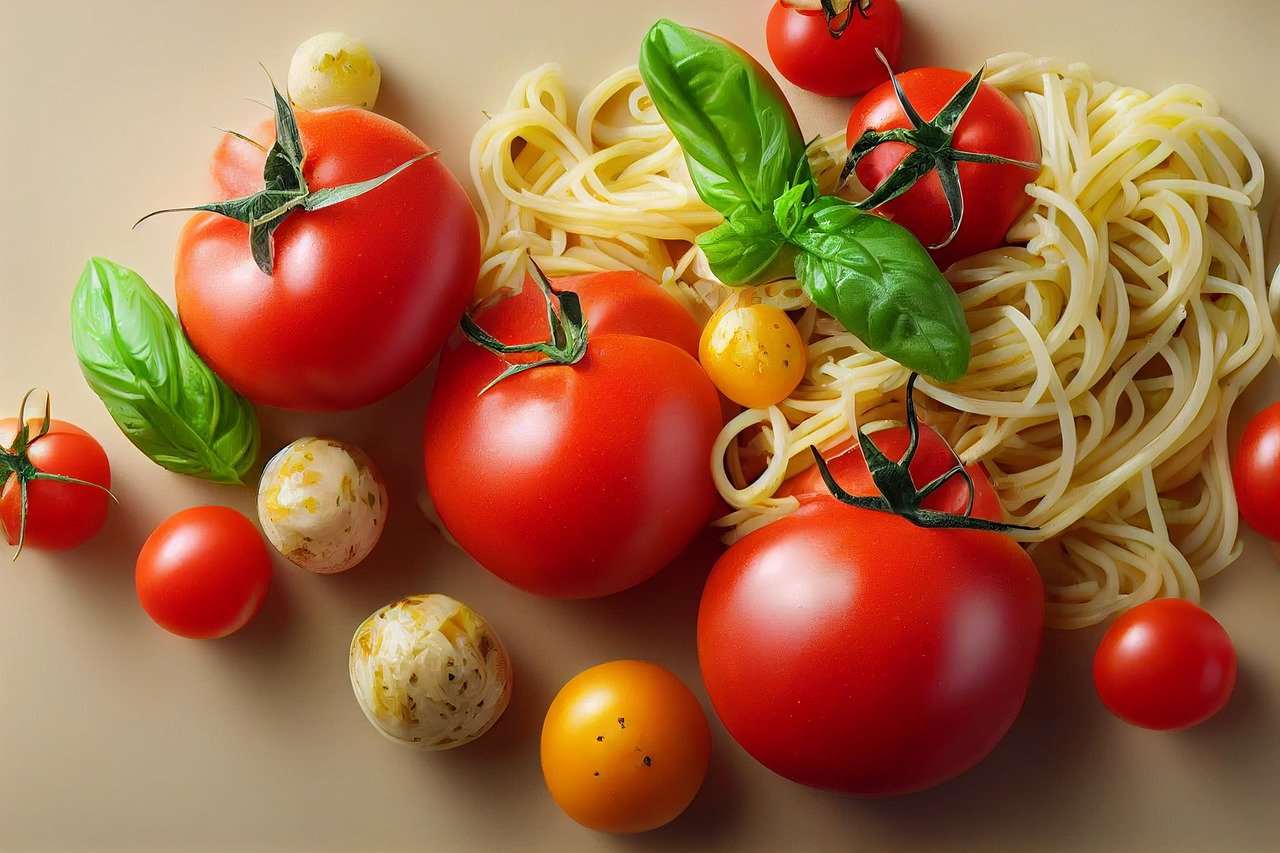There’s something fascinating about the transformation of simple ingredients like flour, water, and eggs into a magnificent dish of pasta. Fresh, homemade pasta has a texture and taste that far surpasses any store-bought variety. While it may seem like a daunting task, creating your own pasta dough is a delectable experience that every home-cook should try at least once. This ultimate guide will introduce you to the pleasure of cooking pasta at home, from dough to dish.
The Basics of Pasta Dough
Creating pasta dough is an art that involves mastering the balance between flour, eggs, and water. The type of flour used can greatly affect the outcome, with different flours offering unique textures and flavors. Typically, an all-purpose flour is sufficient, but you can experiment with semolina or ’00’ flour for a different feel.
Cela peut vous intéresser : 10 quick and healthy meals for busy weeknights
Start by making a well in the middle of your flour, crack the eggs into it, and gradually incorporate the flour, mixing until a dough begins to form. From there, knead until it’s smooth and elastic, which usually takes about 10 minutes. Allow the dough to rest for at least 30 minutes before rolling and cutting into your desired pasta shape.
Rolling Out Your Dough
After the dough has rested, it’s time to roll it out. This process, while requiring patience, is critical for achieving the ideal pasta thickness. Whether you’re using a pasta machine or a rolling pin, the technique is the same. Gradually thin out the dough, ensuring it’s even on all sides.
A découvrir également : Mastering the art of french cooking: a beginner’s guide
Take a portion of the dough, leaving the rest covered to prevent it from drying out. Start at the widest setting of your pasta machine and slowly work your way down to the desired thickness. If using a rolling pin, apply steady pressure and try to keep the dough as uniform as possible. Always remember, the thinner the pasta, the quicker it will cook.
Cutting Your Pasta
Cutting your pasta depends on what kind of dish you’re preparing. If you’re making a noodle dish like spaghetti or fettuccine, a pasta machine with a cutter attachment will be highly beneficial. Feed the rolled dough through the cutter and immediately dust with a bit of flour to prevent sticking.
For stuffed pasta like ravioli or tortellini, you’ll need to cut out shapes from the dough. Use a round or square cutter, place your filling in the center, then fold and seal the pasta. Cooking homemade pasta can elevate your dish and impress your guests.
Cooking Your Pasta
Cooking homemade pasta is considerably faster than cooking dried pasta. Depending on the size and thickness, fresh pasta can cook in as little as one to four minutes. The key to cooking pasta is to use a large pot of boiling water, seasoned with a generous amount of salt.
The moment the pasta hits the water, stir it to keep it from sticking together. Test your pasta frequently – as soon as it’s al dente, or firm to the bite, it’s ready. Drain the pasta, but remember to save some pasta water, as it’s a great addition to your sauce.
Choosing the Right Sauce
The choice of sauce can make or break a pasta dish. Light, fresh sauces like pesto or olive oil-based sauces work well with delicate types of fresh pasta. Heavier, meat-based sauces pair well with robust pasta shapes that can hold up to the sauce, like rigatoni or pappardelle.
When your pasta is cooked, add it directly to the pan with your sauce. This allows the pasta to finish cooking in the sauce, absorbing all the flavors. If needed, add a splash of the pasta water to help the sauce adhere to the pasta.
The Final Touch: Seasoning and Serving
The final step to perfect pasta at home is the seasoning and serving. Even the simplest pasta dish can be elevated with the right garnishes. A sprinkle of good quality Parmesan cheese, a dash of fresh herbs, or a drizzle of extra virgin olive oil can add depth to your dish.
Serve your pasta immediately after adding the final touches. Remember, pasta waits for no one. It’s best enjoyed hot from the pan with plenty of sauce. Enjoy the fruits of your labor and savor the superior taste and texture of your homemade pasta.
Becoming proficient at pasta making takes practice, but once you master the craft, you’ll open up a world of culinary possibilities. Whether you’re whipping up a midweek meal or showcasing your skills at a dinner party, creating your own pasta at home is an endeavor that’s well worth the effort.
Experiment with Different Pasta Shapes
Once you’ve mastered the basic pasta dough and rolling techniques, it’s time to get creative and experiment with different pasta shapes. The shape of your pasta can significantly influence the overall taste and texture of the dish. Whether you want to keep it simple with spaghetti or venture into more complex shapes like farfalle or fusilli, each shape offers a unique dining experience.
To shape your pasta, first ensure your work surface is generously floured. This will prevent the dough from sticking and will make the shaping process easier. Start with a flat pasta sheet, then depending on your desired shape, you can cut, twist, or fold the dough.
For long, thin shapes like spaghetti or fettuccine, you can use your pasta machine to cut the pasta sheet into even strips. For tube shapes like penne or rigatoni, roll small pieces of dough around a thin rod, then cut to the desired length.
For more intricate shapes like farfalle or fusilli, you’ll need to manually shape the pasta with your hands. For farfalle, cut the dough into small rectangles, then pinch the center to create the ‘bowtie’ effect. For fusilli, wrap thin strips of dough around a skewer, then carefully slide it off and allow it to dry.
It’s important to remember that different pasta shapes will have different cooking times. Thicker or larger shapes may take a bit longer to cook than thin, delicate shapes. Always keep an eye on your pasta as it cooks to ensure it doesn’t become overcooked.
The Joy of Creating Homemade Pasta
In conclusion, there’s an undeniable delight in creating your own homemade pasta. From the transformation of simple ingredients like flour and eggs into a smooth pasta dough, to the satisfaction of rolling and shaping the dough into your preferred pasta shape, and finally seeing (and tasting!) the fruits of your labor in a delicious pasta dish – the process is a truly enjoyable culinary journey.
Of course, the making of the perfect pasta doesn’t stop at the pasta itself. Picking the right sauce, seasoning it to perfection, and pairing it with a good wine can elevate your pasta dish to a whole new level. With practice, you’ll be able to whip up a batch of fresh pasta in no time, impressing both yourself and your dinner guests.
Moreover, homemade pasta offers a far superior taste and texture than any store-bought, dried pasta. Plus, you have the freedom to experiment with different flours like semolina or ’00’, try out various pasta shapes, and even incorporate flavors into the dough itself – the possibilities are endless!
So, why not give homemade pasta a try? With some patience, practice, and the help of this guide, you can create the perfect pasta at home. Not to mention, the process of making pasta from scratch can be incredibly therapeutic and rewarding. Here’s to the joy of creating, cooking, and most importantly, enjoying your own homemade pasta! Happy cooking!











